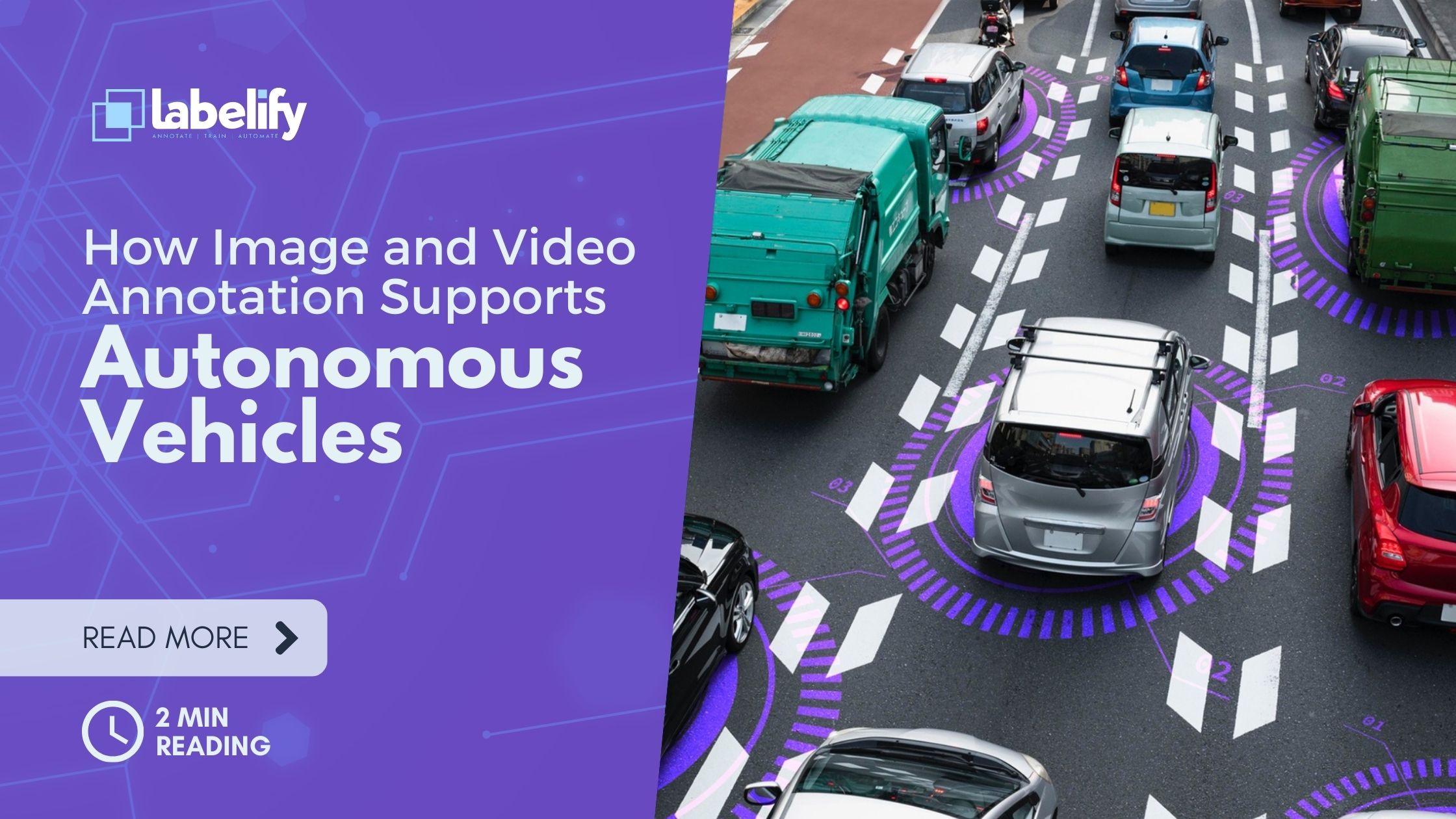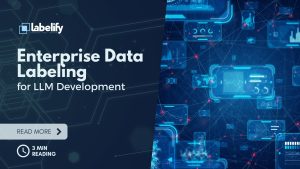Table of Contents
How Image and Video Annotation Supports Autonomous Vehicles
McKinsey & Company management consultants expect widespread adoption by robotic taxis by 2030. This will require a huge increase in vehicle production. However, there are still many technical challenges.
Vox News reports that there are a number of issues that still need to be addressed in order for autonomous vehicles to become a reality. These include difficulties with weather navigation and concerns about hacking and cyber security. These problems are important, but the industry is still innovating and improving.
Data annotation is one area where this is taking place. Professional annotation services can help overcome many development hurdles by providing accurate, scalable video and image annotation. Labelify is collaborating with an AI company that develops autonomous vehicles to solve challenges using smart data labeling.
Determining the Objectives
Three objectives were set by the client for their machine-learning model. They required custom dataset creation. They were able to work with Labelify as a service provider, and optimize the annotation process by stating their goals. These were the objectives:
Monitoring in-car behaviour: Safety and user experience can both be significantly improved by installing AI cabin monitoring. Client wanted to train the model to recognize facial expressions and track passengers movements. AI-enabled in-car behaviour monitoring could help prevent accidents by alerting drivers if they fall asleep or aren’t paying attention.
Vehicle Recognition at Night and Day: The primary goal of autonomous vehicles is to identify other vehicles and navigate around them. To ensure safety, it is crucial that the recognition process works 100% of the time. Low light conditions make this even more difficult. Computer vision models that are not used to night driving may be seriously affected.
Computer Vision for Autonomous Vehicles: A holistic understanding of the environment is essential for autonomous vehicles. This includes being able to distinguish between the road, sidewalk, and sky. This is especially difficult in busy urban environments, where AI systems receive a lot of sensory data.
The problem solving process of Labelify is made easier by the use of Labelify
Labelify was chosen by the client to provide annotated training data for this complicated project. Labelify is a professional annotation service that can draw on the experience of many other annotation projects in order to solve specific development problems.
Labelify provided 500 hours of annotated footage from various drivers to support in-car monitoring training. Labelify’s experienced annotators used skeletal annotations on the drivers and passengers’ upper bodies to track movement through each frame. Key point annotation was also used to identify facial features in the videos. These data were then fed to the AI for in-car monitoring, allowing it to learn how humans behave on the road.
Labelify’s own team of annotators analyzed many hours of traffic videos to identify vehicles. Each vehicle was identified by its number plate and tracked through every frame. Other information was also included on each label, including the carmaker, model and color. To create a dataset that accurately represents real-world light conditions, this was done for both daytime and night footage.
Labelify used bespoke annotation tools in order to create a dataset with 20,000 segments of American and European streets to help support its autonomous vehicle computer vision project. Annotators use semantic segmentation techniques to divide images pixel by pixel into specific objects: car, sign, tree, road, sign and tree. This is an important part of developing autonomous vehicle AI.

Transforming Livestock Management through Quality Data Annotation
Smart livestock farming is a promising way to address the needs of the 21st century. Computer vision-based AI monitoring systems can support farmers and improve animal welfare while promoting efficiency. Machine learning models are changing the way livestock management works. They can manage herds and alert producers when welfare issues may be present.
Video annotation and image annotation have been a key factor in the development of AI systems for livestock management. Developers must have the necessary data to enable the technology to reach its intended goals.
Labelify and other annotation providers are responding to this need by offering high-quality datasets that meet industry standards. This blog will highlight the many exciting applications of AI technology in livestock management and explain how certain annotation techniques can be used to make these applications possible.
Potential of AI in livestock management
- Smart farming computer vision models can monitor livestock and relay important information to farmers. These are some examples of specific applications:
- Drones can automatically count the number of animals in an area or field. This alerts farmers to missing animals in large areas.
- AI-powered cameras are being used to detect and monitor the health of herds. Early intervention is key to saving animals and reducing the spread of deadly livestock pathogens.
- Monitoring herds also includes monitoring feeding rates in order to make sure that all animals get the nutrition they require.
- Annotation techniques support livestock management
- Access to high-quality video and image training data is required for the above use cases. Annotation techniques are especially useful for livestock management models.
Semantic Segmentation: This technique allows images to be divided pixel-by pixel into different object classes. This would apply to livestock imagery, where each pixel that represents a cow would be identified with the same colour. The same treatment would be given to the field, the sky, or any other type of object. This type of annotation allows models to understand complex environments.
Instance segmentation: This annotation method adds additional detail semantic segmentation by identifying every instance of a particular class. This means that each cow in a livestock image must be labeled with a different colour. This level of detail can be difficult to label, especially when it is spread across multiple frames of video data.
Annotation using polygons: Livestock management systems must recognize the complex shapes of different animals. This is achieved by using polygon annotation techniques to trace the outline of animals in a wide range of contexts and positions.
Skeletal annotations This training is done using video data. Annotators draw lines across videos that show animals moving to mark their limbs or points of articulation. This information allows models to recognize normal and abnormal movements.
Data annotation services offer an edge
The efficient deployment of these annotation techniques is essential for creating quality annotations livestock management AI training datasets. This time-consuming task can prove prohibitive for small and large tech companies. By leveraging their management experience and expertise, professional annotation services can ease the burden of data creation and labeling.
Labelify uses proprietary technology, an in-house team of annotators and multiple layers quality control to ensure data annotation that is accurate, affordable, and scalable. To schedule your personal demo, contact a member of the team today.




